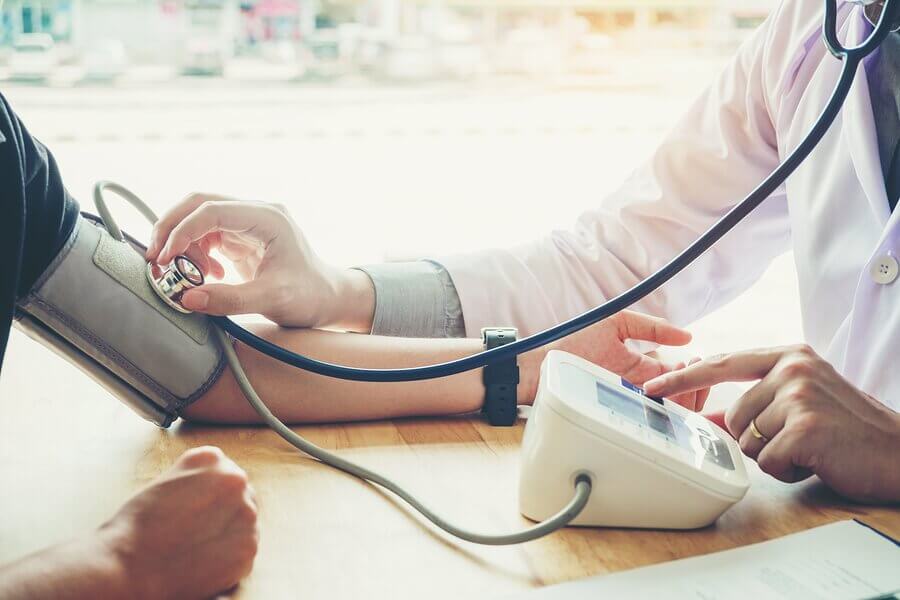Auscultation of Veins and Arteries

The term auscultation comes from Latin, and it refers to the act of hearing. Therefore, auscultation of veins and arteries is where you listen to the specific sounds of blood moving through blood vessels. That way, doctors can diagnose different diseases. In short, auscultation is the way doctors can figure out what’s going on inside your body. They can do this by directly listening with their ear, or with a stethoscope or phonendoscope.
It’s possible to listen to lots of different parts of the human body, such as the heart, respiratory system, or the digestive system. In this article, we’ll talk about auscultation of veins and arteries.
Auscultation of veins
Veins are blood vessels responsible for driving blood from your capillaries to your heart. They usually carry waste cells and CO2, although the arteries carry oxygenated blood. The pulmonary arteries carry oxygenated blood from the lungs to the cavities on the left side of the heart. When they’re filled, this organ pumps the blood to the rest of the body through the aorta and umbilical veins.
Normally, you can’t hear anything in your veins. However, in certain situations, you can hear murmurs in the jugular veins. For example, this happens in patients with anemia. This is a disease where the blood doesn’t have enough oxygen. Additionally, with chlorosis, there is an iron deficiency in the blood. These noises are usually continuous. When there are breaks and it doesn’t sound continuous, you can assess this with auscultation of veins and arteries.
Also check out: How to Prepare a Cayenne Pepper Ointment for Varicose Veins
Why would there be auscultation in veins?
The noises could change when the blood starts to go through channels of different diameters. At the same time, the veins don’t fill as fast. The interruption of the bloodstream by pressure makes these noises disappear. However, moderate pressure with the stethoscope that decreases the caliber of the vein makes them make sounds again.
Finally, we should mention that when these noises are intermittent, they happen when you breathe in. This is when the blood flows best.
Auscultation of arteries
Arteries are also blood vessels. However, they’re a little different from veins because they carry blood from the heart to the different tissues in your body. However, veins go in the opposite direction, as we mentioned earlier. In this sense, arteries do the opposite job, since they take the oxygenated and nutrient-rich blood to all parts of your body.
As for auscultation of arteries, with the exception of the aorta, pulmonary, carotin and subclavian, arteries don’t make sounds, or, if they do, they’re insignificant. However, using a small device known as a sphygmomanometer, you can hear the pulse of small arteries. For example, you can hear the radial artery, which the human ear can’t hear.
You might be interested in: How to Unclog Your Arteries with Four Natural Remedies
Sounds in the larger arteries

Although you normally don’t hear noises in most arteries, you can hear them in large ones, like the following:
- Aorta
- Pulmonary
- Carotid
- Subclavian
In these arteries, you can hear three types of noise:
- Propagated from the heart: Usually, these are noises from the aortic orifice. Normally, they are systolic noises, since diastolic propagates in the other direction to the arterial bloodstream. Therefore, you won’t hear the last one, or you’ll barely hear it.
- Produced in the same artery: These noises are always in sync with the pulse. They happen when there’s a large increase in blood pressure. This is common when someone has hypertrophy of the left ventricle, or too much cardiac activity. In kids, you can hear them in their fontanelles.
- Pressure of stethoscopes or phonendoscopes: The pressure decreases the caliber of the vessel, and you can hear the liquid moving. Additionally, it will flow at the same rate as your pulse. If the pressure goes away, so does the noise.
In conclusion, auscultation of veins and arteries is one of the many ways doctors detect problems in the body. Therefore, it’s very effective as one of the first ways to diagnose certain diseases.
All cited sources were thoroughly reviewed by our team to ensure their quality, reliability, currency, and validity. The bibliography of this article was considered reliable and of academic or scientific accuracy.
- Aragoncillo Ballesteros, P. (2009). Anatomía del corazón. Libro de la salud cardiovascular del Hospital Clínico.
- Vasquéz, A. (2013). Auscultación cardíaca y fonocardiograma. Scielo. https://doi.org/10.1007/s10811-011-9710-3
- Sanchez Torres, G., & Guadalajara, J. F. (1980). La auscultación cardio-vascular durante la apicoscopia y la osciloscopia carotidea o regional. Un método diagnóstico sencillo y útil. Archivos del Instituto de Cardiologia de Mexico. https://doi.org/10.1017/S0003055409990220
This text is provided for informational purposes only and does not replace consultation with a professional. If in doubt, consult your specialist.








